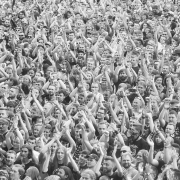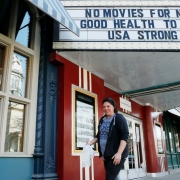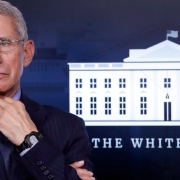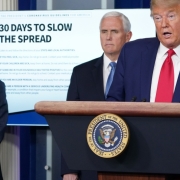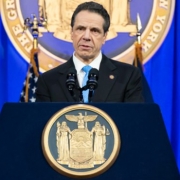The virus will teach us many things, but one lesson has already been relearned by the American people: there are two, quite different, types of wisdom.
One, and the most renowned, is a specialization in education that results in titled degrees and presumed authority. That ensuing prestige, in turn, dictates the decisions of most politicians, the media, and public officials—who for the most part share the values and confidence of the credentialed elite.
The other wisdom is not, as commonly caricatured, know-nothingism. Indeed, Americans have always believed in self-improvement and the advantages of higher education, a trust that explained broad public 19th-century support for mandatory elementary and secondary schooling and, during the postwar era, the G.I. Bill.
But the other wisdom also puts a much higher premium on pragmatism and experience, values instilled by fighting nature daily and mixing it up with those who must master the physical world.
The result is the sort of humility that arises when daily drivers test their skills and cunning in a semi-truck barreling along the freeway to make a delivery deadline with a cylinder misfiring up on the high pass, while plagued by worries whether there will be enough deliveries this month to pay the mortgage.
An appreciation of practical knowledge accrues from watching central-heating mechanics come out in the evening to troubleshoot the unit on the roof, battling the roof grade, the ice, and the dark while pitting their own acquired knowledge in a war with the latest computerized wiring board of the new heating exchange unit that proves far more unreliable than the 20-year-old model it replaced.
Humility is key to learning, but it is found more easily from a wealth of diverse existential experiences on the margins. It is less a dividend of the struggle for great success versus greater success still, but one of survival versus utter failure.
So far in this crisis, our elite have let us down in a manner the muscularly wise have never done.
Botched Models, Bad Advice
Take any contentious issue—travel bans, the advantages of masks, the Chinese compromising of WHO, the entire industry of grievance politics infecting criticism of China’s despicable behavior, delayed testing by the Centers for Disease Control and FDA, modeling, the efficacy of antimalarial drugs—and our elite seem unable to admit they were wrong, and wrong with a great deal of costly arrogance.
It is no exaggeration to say that most models that the best and brightest offered the public, from the imported Imperial College in London to those from the University of Washington and many more besides, were not just inaccurate, but quite mistaken in two tragic ways: First, they were accepted as gospel by governments and thus their flawed assumptions became the basis for policies that in many cases may prove counterproductive. Second, the modelers themselves either did not promptly correct their warped inputs, or were not completely forthcoming about their data and methodologies, or blamed their flawed assumptions on others or circumstances beyond imagination, or claimed that their mistakes were in fact salutary—if not sorta, kinda planned—in galvanizing a presumably infantile public to accept draconian measures that it otherwise would not.
I know a plumber and an electrician, both skilled in the pragmatic engineering of pipes and wires, who would not dare to think they could offer a model of plumbing or electrical prediction if they had no idea of the real size of the denominator and were likewise unsure that the numerator was widely accepted as accurate and clearly defined.
If I called my car mechanic and explained that I had a bad knock in my engine in the middle of night in the middle of nowhere, he likely would tell me ways to risk driving home, even if possibly hurting the engine, given the lose-lose proposition of spending the night in an unsafe area—in a way our media class seemed to have little clue that hydroxychloroquine for those who cannot breathe need not be certified as 100 percent efficacious in their effort to inhale one more day.
On March 12, Governor DeWine of Ohio, flanked by his state health director, told the 11 million residents of Ohio that based on models he knew that 100,000 “had” active cases of the disease. That was a caseload that his experts further warned would double every six days. In other words, at the then roughly 2 percent lethality rate of the known actively infected—his medical team all but frightened the state with the certainty that in 24 days there could be 1.6 million infected Ohioans and an assumed 40,000 dead.
In fact, about a week ago, on April 6, there were fewer than 5,000 known cases and less than 200 Ohioans who had succumbed to COVID-19. Even with far more unknown cases than known and the efficacy of slowing viral transmission via mass sheltering, the data was not just flawed but perhaps even preposterous. State officials could have offered some official explanations for their misinformation other than the subtext that such fright was medicinal in persuading a public to do something they supposed the public did not know was good for it to do.
When California Governor Gavin Newsom warned that 25.5 million Californians “will” get the virus in the eight weeks following March 18, albeit without his shelter-in-place orders, he was also essentially stating that, at a then 2.6 percent lethality rate for Californians known to have the active virus, about 1 million would die. As I write, 24 days out from his prediction and nearing the half-way point to Doomsday, about 23,000 Californians have tested positive, and either are fighting the disease or have recovered. Since late January, about 650 of 40 million Californians have died from the disease, in a state where well over 700 people die from some cause every day.
If 10 times that number of known positive tests are now actively infected, we legitimately could assume at least 222,000 residents are now active or past carriers. Those who advised Newsom to shut down the world’s sixth-largest economy, including universities like Cal Tech, UC Berkeley, and Stanford, Silicon Valley, and the commerce and livelihoods of 40 million residents, apparently did not factor into their models some possible collective immunity among thousands of Californians who, for months, were on the front lines of arriving flights from China.
Nor did modelers seem to factor in the ability of people to social distance even before the shutdown was ordered, or the fact that a virus that does not kill 95.5 percent of those who are infected, but not frontline health workers or over 60 years old, may be deemed by the public manageable in a way that does not require having multigenerational small businesses ruined, or careers destroyed, or retirement savings accounts wrecked, or key appointments with doctors postponed or canceled.
Repeating Past Mistakes
Practical wisdom might warn that one also does not erode the Constitution because of a mysterious virus, in the sense one does not arrest ministers preaching in parking lots, or those walking hand in hand alongside the road.
Given past misadventures in times of crisis from Woodrow Wilson’s wartime de facto suspension of the First Amendment to FDR’s internment of Japanese-Americans, one should not advocate instituting a national register of the infected and recovered, as some sort of super citizenry and then entrust such knowledge to what we know of the civil liberty sensitivities of Silicon Valley—all because a Bill Gates or Anthony Fauci believe their expertise leads them to think it may be a good idea.
Sometime in the late 19th century, the wide-scale growth of graduate education, professional schooling, and the formal granting of a M.D., Ph.D., or J.D. were necessary antidotes to quackery and the dangers of autodidactic expertise masquerading as the product of the scientific method. But in the last two centuries, that notion of argument from authority has metamorphosed into a religion, a faith-based discipline.
No one at Harvard Medical School or the World Health Organization can guarantee exact science in the sense of something completely right and absolutely wrong, any more than stomach ulcers were supposedly only due to stress and aspirin in the 1960s, and then also to H. Pylori and Advil in the 21st century and then also to a mixture of all that and also something no doubt undiscovered today.
The former gold standard of cobalt radiation (“the cobalt bomb”) to treat cancer may soon seem a little barbaric, in the manner that our present chemotherapy regimens likely will appear medieval to doctors a half entry from now. Science is evolutionary. On occasion, yesterday’s certainty is today’s skepticism and tomorrow’s ridiculousness.
In other words, common sense, indeed humility as well, as a corrective to scientific arrogance was often lost in this crisis. One day the Imperial College in London was lauded as Einsteinian, the next it appeared Vegas-like.
Warped Arguments Wrapped in Authority
The result of scientific arrogance, without practical audit, presents as something like the surreal online “world meter” data on the hourly progress of the virus. Such sites offer superficially impressively precise, but ultimately flawed, information on COVID-19 cases, mortality, and lethality and infection—without label warnings that neither the number of actual active or past infectious cases, nor the percentage of those who die from, rather than with, can yet be accurate. Much less are we informed by such electronic meters of the absolute unreliability of statistics from China and other authoritarian countries.
Our modelers constantly downsize their bleak prognostications as “data changes” as if one should ever publish such Armageddon scenarios when they had insufficient information. More worrisome, are post facto claims that such mistakes might have been salutary.
Perhaps a mechanic could rejoin that he warned the driver never to venture 5 miles beyond his home given tiny fissures in the driver’s cylinder block, and when his diagnosis is revealed to be erroneous and quite costly to his client, offered, “Well, at least I saved him gas money, wear and tear on the car, and a possible traffic death.”
Degrees no longer necessarily reflect merit, at least as it once was calibrated by a university’s or a public agency’s own standards. Over 20 years ago, one could read any scholarly journal in the social sciences or humanities—and today even their scientific counterparts—and learn how social justice, identity politics, and political activism had warped science and data-driven analyses. The erosion infected everything from studies of global warming to illegal immigration to the role of the “Other” in ancient societies. It was as if letters behind one’s name allowed authors to massage data and argumentation for the higher purposes of egalitarianism and contemporary social justice.
Every young scholar is now faced with the dilemma of writing the truth as the evidence compels him to do, or venturing into weaponized speculation that is far more likely to win him peer approbation and career enhancement, even as it insidiously bankrupts his discipline.
Elite wisdom, which in its allegiance to the scientific method eventually is likely to find an antidote and vaccination against the virus, still fails us in so many other ways in which it should not, in part also because its high priests rarely face the consequences of their own ideological and scientific pronouncements.
Whatever the end result of this crisis, few at the WHO, CDC or the state health directors are going to lose their jobs in a way the small restaurateurs and Uber drivers most certainly will.
When the corporate lawyer, under 65 and not a health-care worker, rails that the know-nothings wish to endanger him by restarting the economy, despite a 5-in-1,000 chance of dying if infected, his argument is not based on existential need, nor is it part of the lose-lose landscape of his supposed social inferiors who are willing to risk a small chance of severe infection to prevent a very likely chance of going broke and ruining an entire family.
That is, elites who make policy do not necessarily immediately need to plug back into a normal economy to survive. An Ezekiel Emanuel—brother of Rahm (of “never let a crisis go to waste” infamy), advisor to Joe Biden, and of greater infamy for his prior callous pronouncements that those over 75 (e.g., like Joe Biden) more or less are society’s unproductive and enfeebled sponges—claims that we might need to be shut down America for up to another 18 months (but then why not two or three years?).
The subtext of Emanuel’s warning is that even after 72 weeks of such exhausting punditry from a university billet, he will emerge more or less financially secure, maybe our national health czar in a new administration, and without much worry that millions of others will not—or in fact will die or sicken trying to remain solvent.
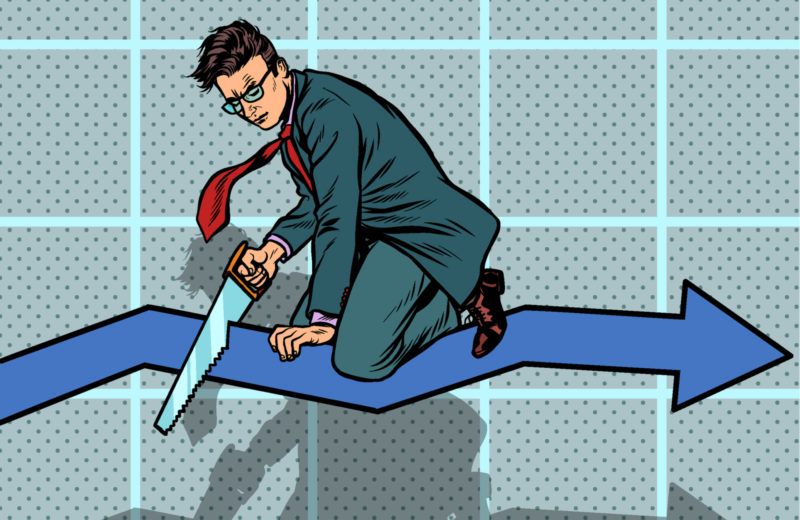 The late Richard Feynman, one of the 20th century’s eminent physicists, famously said, “Science is the belief in the ignorance of experts.” Unfortunately, the response of experts to the coronavirus pandemic has vindicated Feynman’s claim.Experts in the supposedly scientific fields of public health and economics have made a mess of things. Their failures would be comedic, were the consequences not so tragic. Instead of capable service for the public’s welfare, the American people have been made to suffer incompetence and malfeasance. Unless we critically examine the failure of experts, we invite similar blunders in the future.In terms of incompetence, it would be difficult to top this country’s public health officials. Case in point is the Centers for Disease Control and Prevention. The CDC, as it describes itself, “saves lives and protects people from health, safety, and security threats.” In truth, it has directly contributed to the opposite.One glaring failure of the United States in regards to the pandemic is testing. We lag significantly behind other countries. This is largely the CDC’s fault. The virus genome was mapped in January, and private tests were available not long after. But the CDC ordered these private labs to halt, coming up with its own test, which proved to be defective.In fact, many of the testing kits assembled by the CDC were contaminated! Had the CDC not dropped the ball, we could have moved towards mass testing much sooner. This in turn would lessen the economic harm of the several states’ stay-at-home orders. In other words, the CDC’s incompetence is directly responsible for thousands of lives lost and trillions of dollars in economic damage.
The late Richard Feynman, one of the 20th century’s eminent physicists, famously said, “Science is the belief in the ignorance of experts.” Unfortunately, the response of experts to the coronavirus pandemic has vindicated Feynman’s claim.Experts in the supposedly scientific fields of public health and economics have made a mess of things. Their failures would be comedic, were the consequences not so tragic. Instead of capable service for the public’s welfare, the American people have been made to suffer incompetence and malfeasance. Unless we critically examine the failure of experts, we invite similar blunders in the future.In terms of incompetence, it would be difficult to top this country’s public health officials. Case in point is the Centers for Disease Control and Prevention. The CDC, as it describes itself, “saves lives and protects people from health, safety, and security threats.” In truth, it has directly contributed to the opposite.One glaring failure of the United States in regards to the pandemic is testing. We lag significantly behind other countries. This is largely the CDC’s fault. The virus genome was mapped in January, and private tests were available not long after. But the CDC ordered these private labs to halt, coming up with its own test, which proved to be defective.In fact, many of the testing kits assembled by the CDC were contaminated! Had the CDC not dropped the ball, we could have moved towards mass testing much sooner. This in turn would lessen the economic harm of the several states’ stay-at-home orders. In other words, the CDC’s incompetence is directly responsible for thousands of lives lost and trillions of dollars in economic damage.

